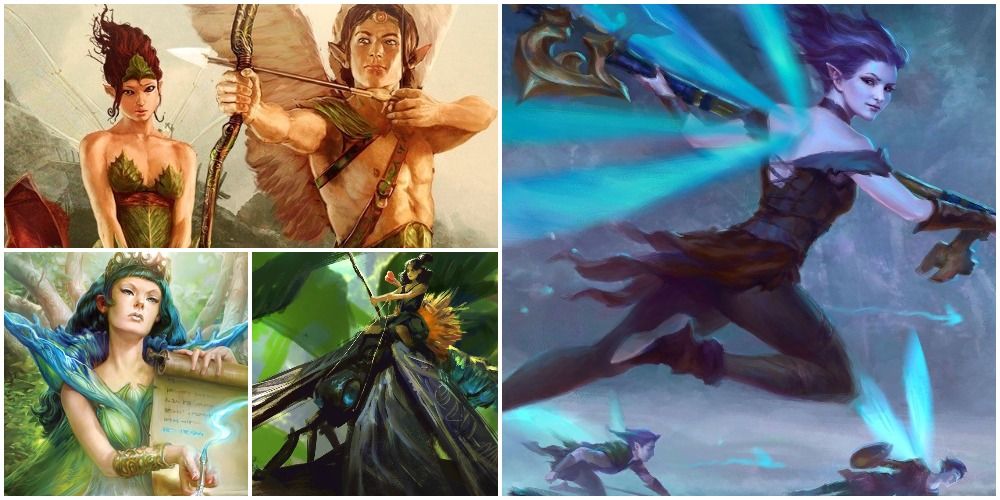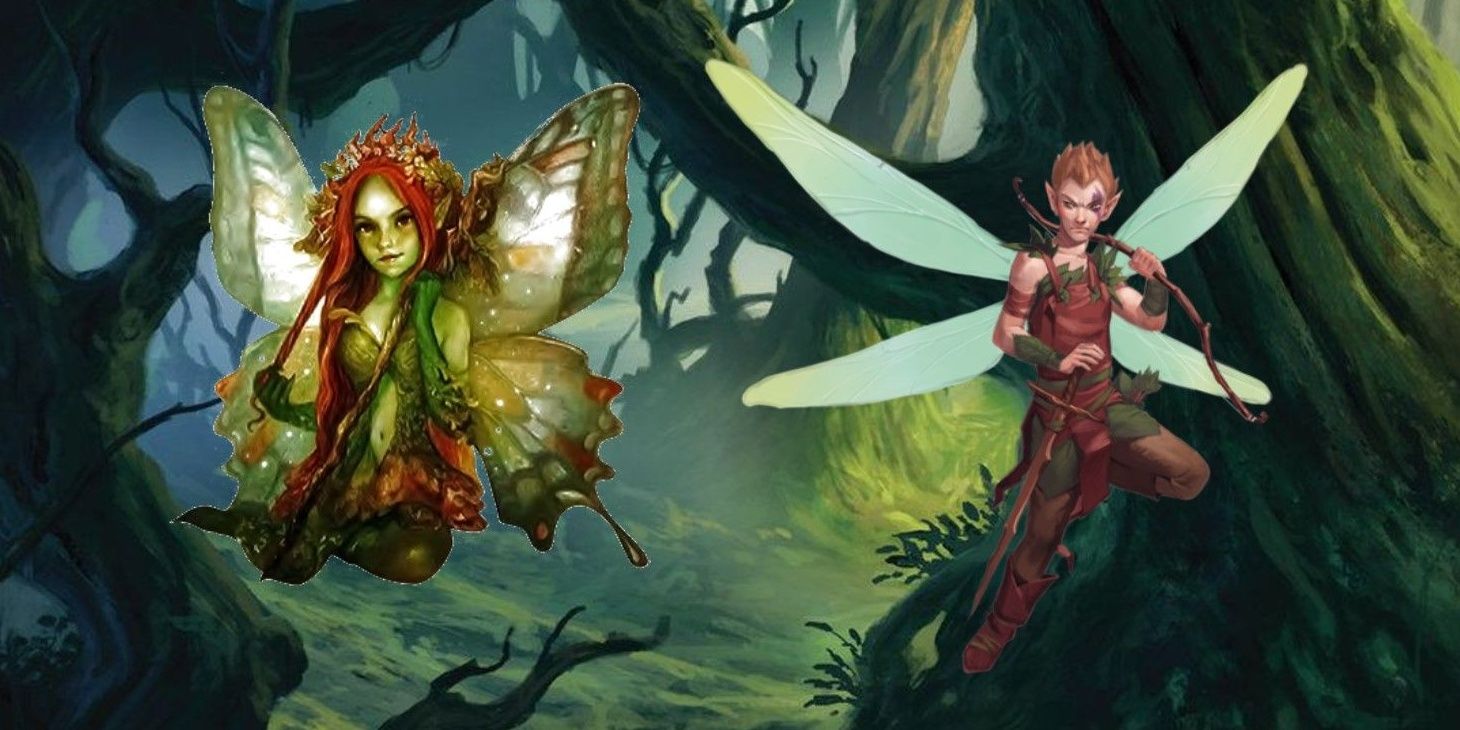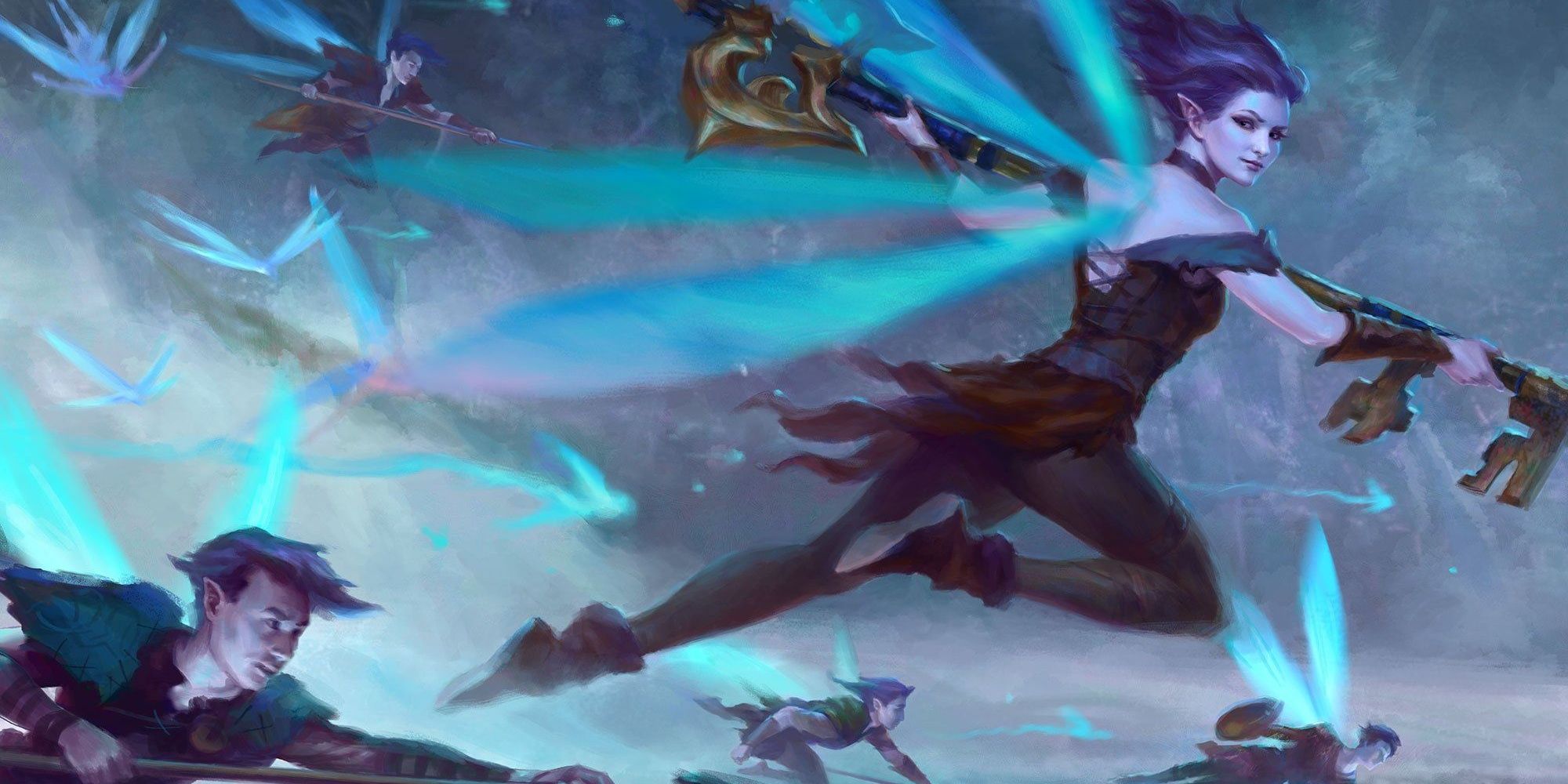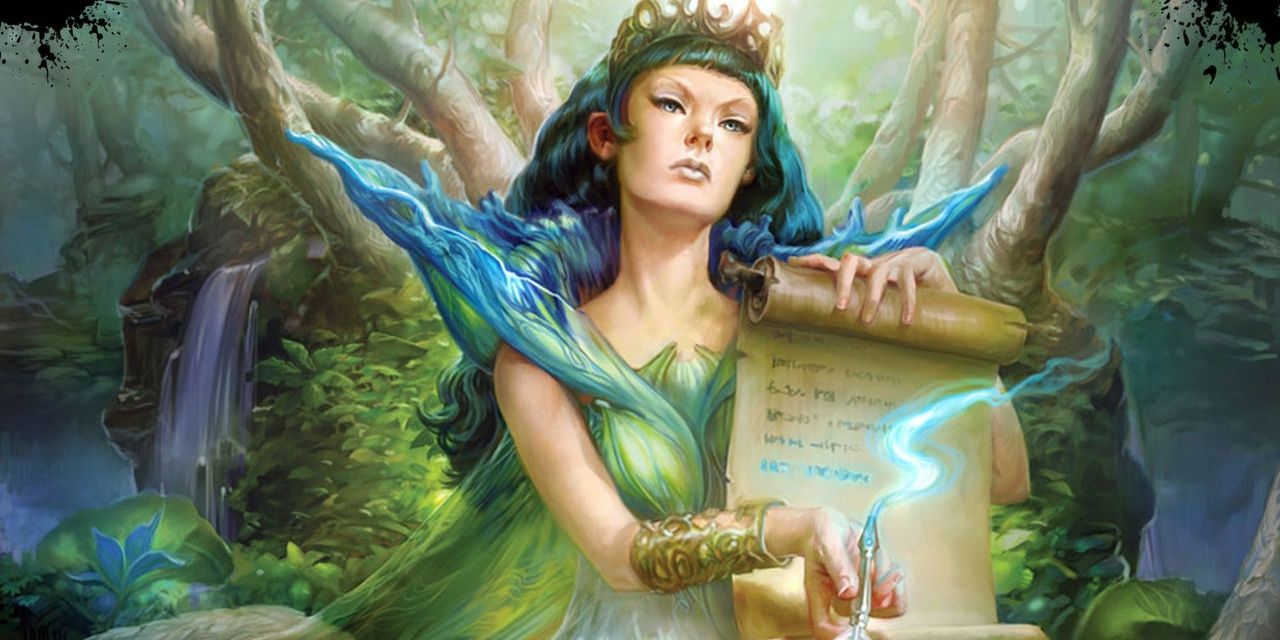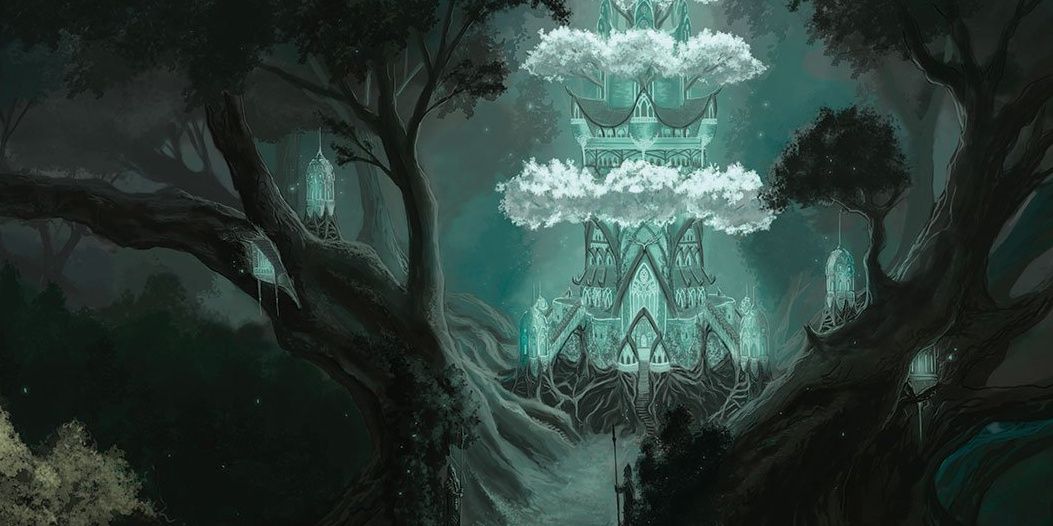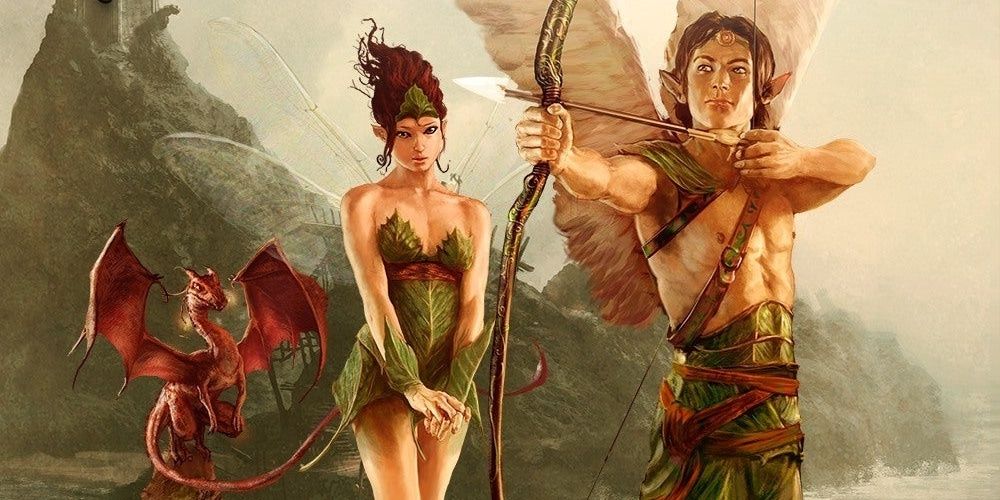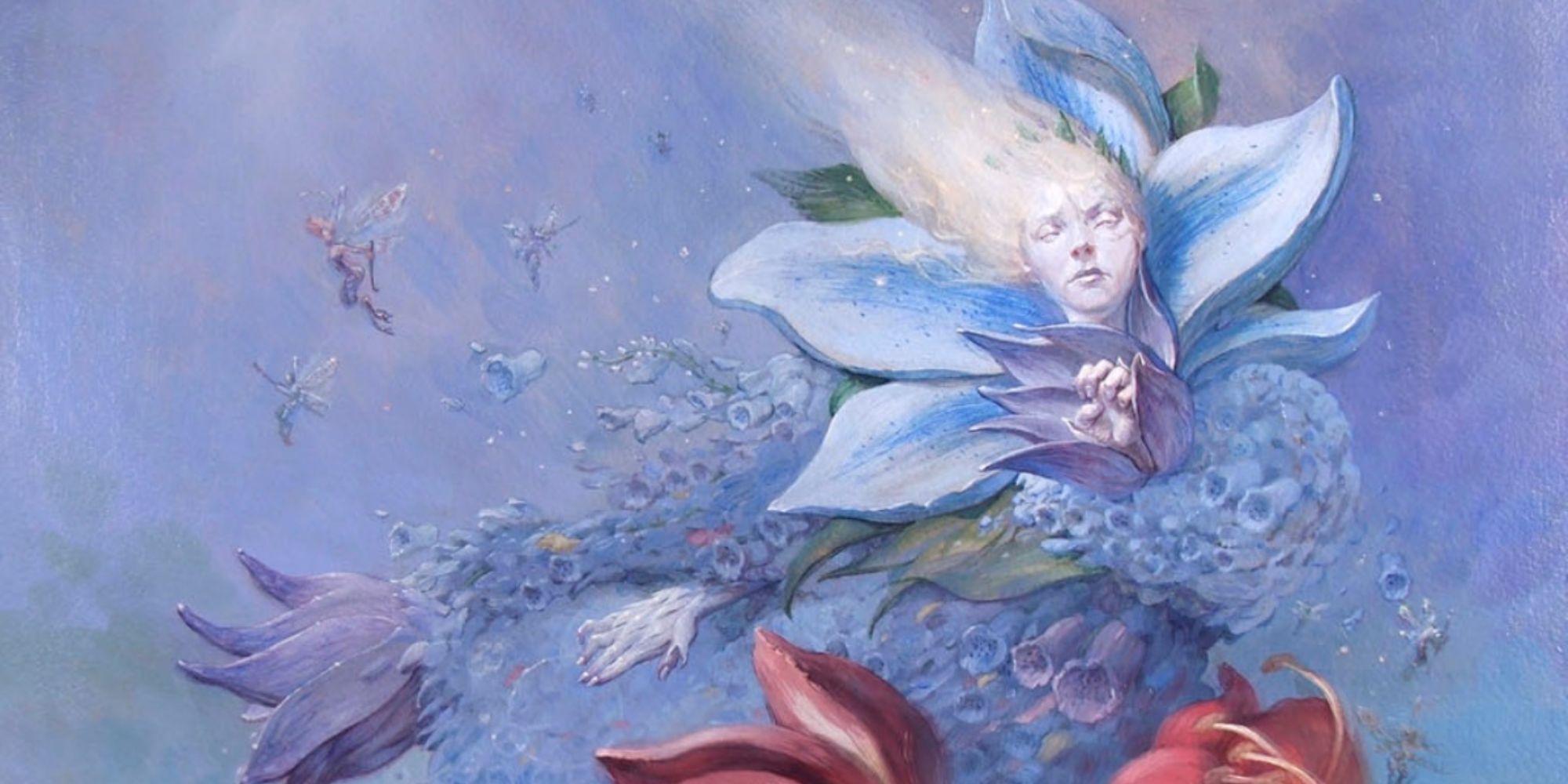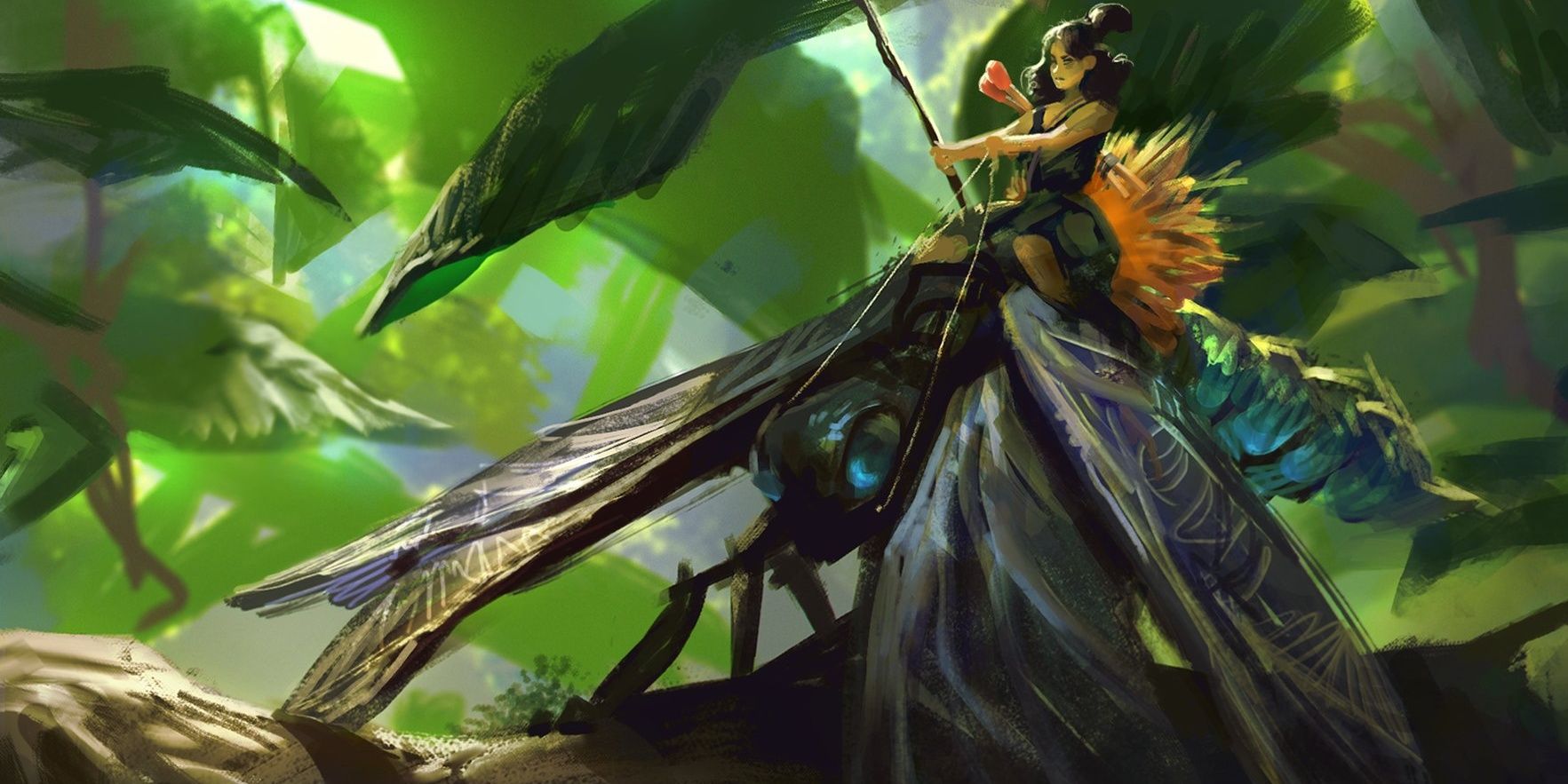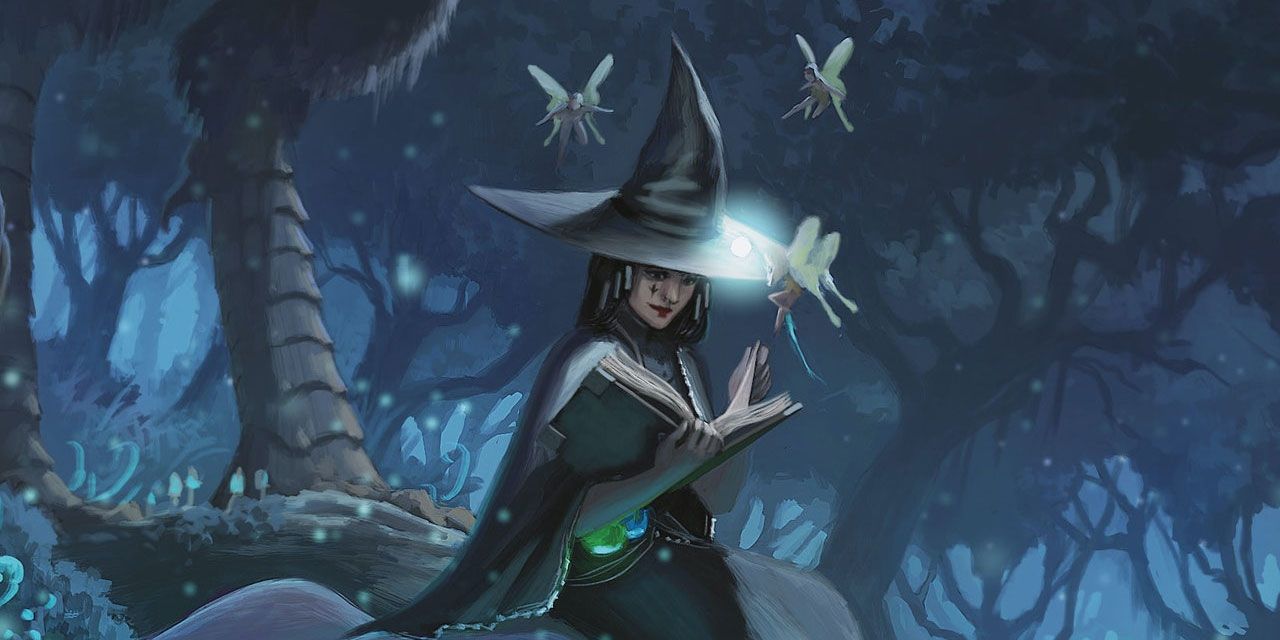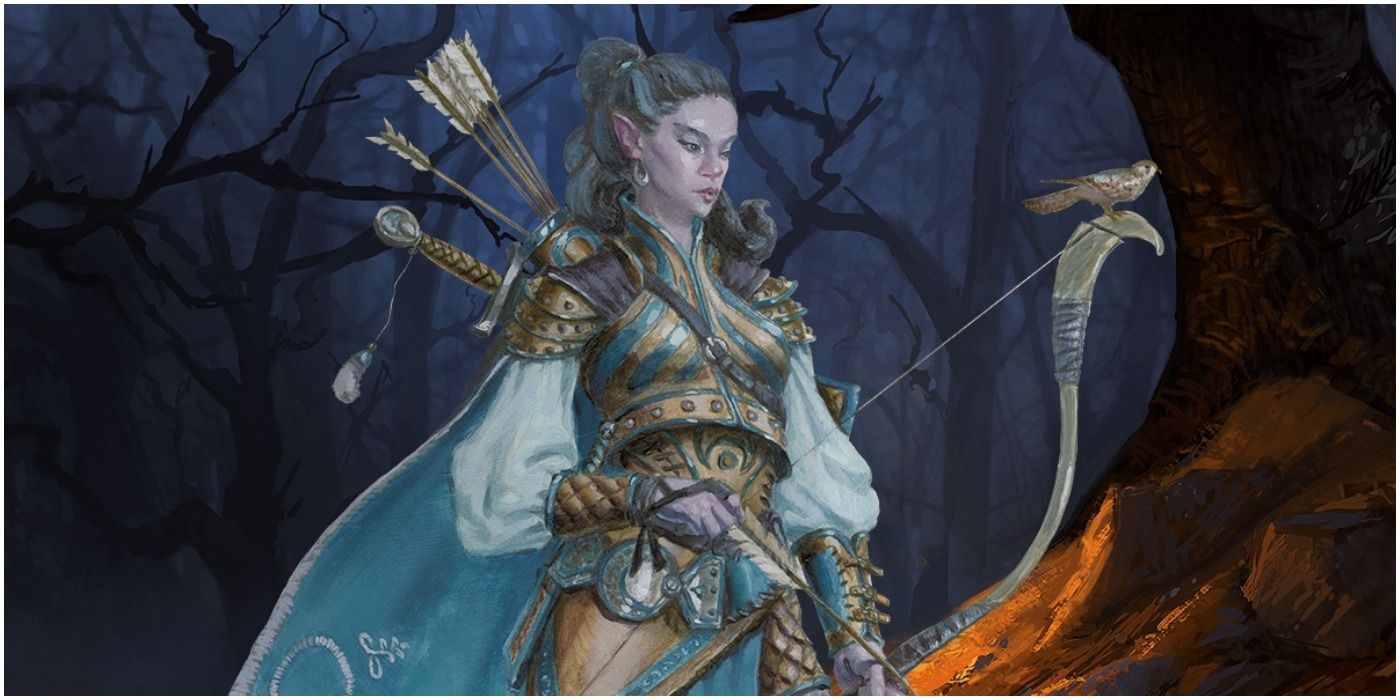One of the best parts of Dungeons and Dragons is the ability to customize an original character. Players can choose everything about their character- race, gender, even their sexual orientation if they feel so inclined. An entire backstory can be crafted defining the character's history and motivations. But character creation can be daunting for an inexperienced player. There are several different classes to choose from, but also several different races. The Player's Handbook offers a good base selection, but the range of options keeps growing with new books.
With the recent release of The Wild Beyond the Witchlight, two more races have been added in Dungeons and Dragons - the harengon (rabbit-folk), and fairies. Fairies have been a staple of fantasy for decades, making it somewhat curious that they are only now being added as a playable race. Some images are courtesy of Magic The Gathering, a card game from the makers of Dungeons and Dragons.
4 Customization Options
Fairies are usually depicted as humanoid creatures of small size with a set of translucent wings protruding from their back. This is also true of their depiction in Dungeons and Dragons. They are categorized as a small race, though the guide does not specify their exact size. Whether they are tiny or more like halfling-sized may be an exercise for the player and dungeon master. There are a lot of options when it comes to their appearance. For instance, a fairy could have a unique set of wings, insectile legs, or an unusual skin tone.
There are usually very clear physical features that define a dwarf, orc, or elf. Dwarves are usually short and have large beards. Orcs have enormous fangs protruding from their lower jaw. Elves have pointed ears. Fairies have a bit more room for players to experiment with different physical traits. A player could theoretically create something in the vein of Tinkerbell or something completely alien.
3 Strengths and Weaknesses
Flight
The most obvious advantage to a fairy is the ability to fly, though it does come with limitations. Unlike aarakocra, who have a fixed flying speed of 50ft, a fairy's flight speed is only equivalent to their walking speed. This does mean they cannot fly as far, although the ability does allow them to easily reach high places that may be more difficult for other races. Being smaller also has the obvious advantage of being able to get into tiny spaces that would not be accessible to a larger race like a goliath or a centaur.
However, like aarakocra, flight can be impeded by clothing. Wearing medium or heavy armor will prevent flight. This does limit the options available to players when it comes to equipment. Players interested in looking at a paladin or fighter will need to take this into consideration. Light armor will offer the least hindrance unless they are ready to unequip heavy or medium armor whenever flight is needed.
Inherent Magic
Fairies are naturally magical and get access to some spells regardless of class. At the first level, they get the druidcraft cantrip which allows the caster to predict the weather, help plants grow, produce simple illusions, and extinguish small flames.
The usefulness of this particular spell may vary depending on how the campaign is structured, but it is usually restricted to druids. Higher levels give access to Faerie Fire, which can be used to illuminate dark spaces within 20 feet, and enlarge/reduce which allows the caster to temporarily change the size of objects.
2 Existing Lore
Fairies are native to the Feywild, a surreal parallel dimension adjacent to the material plane. This is a strange world that has a tendency to defy any conventional understanding of logic or reason, rooted in chaotic magic.
Because the Feywild is closely tied to the material plane, portals often appear between them allowing creatures from one to enter the other. This would provide a means for creatures like fairies to enter the material plane and vice versa. Of course, the portals can be wildly unpredictable- they can open and close at random, or be completely invisible making it possible for a traveler to walk through one unknowingly.
1 Creating a Fairy
Background
Like many races and classes, a good place to start with a fairy is thinking about their motivations and goals. Players may want to think about their character's relationship to the Feywild. Assuming the game takes place in the Material Plane, it may be worth considering what brings a fairy into this world.
Perhaps she had heard stories of the material plane and was curious to see it for herself. Maybe she accidentally ran into a portal and now wants to find a way back. Maybe her parents fled from some great evil in the Feywild and raised her in the material plane to keep her out of its reach.
Stats
Many races and classes get natural bonuses for specific attributes. Dwarves get an automatic +2 to constitution, halflings get +2 dexterity. This is also true of fairies, except they get a lot more flexibility. Fairies get an extra three points that can be used on any attribute. They can choose to increase one of them by two with another increased by one, or increase three different traits by one.
The fact that fairies can choose where their bonuses go, unlike other races, means they can be more easily adapted to fit different playstyles. A player interested in being a fighter or a barbarian can give themselves a +2 bonus to strength, a bard could give themselves a bit more charisma, a rogue could improve their dexterity, a wizard could improve their intelligence. This makes fairies a versatile race with lots of options.
Classes
Fairies have some extremely flexible customization options that allow them to fit different playstyles and different classes. But while they could technically be any class there are some that are a more logical fit. A fairy's small size makes them less suited for direct combat, and anything past heavy armor hinders their special ability to fly. While this does not rule out the possibility of fairy paladins or fighters, it is something that should be considered.
This limitation, however, does make fairies an excellent choice for unarmored classes such as monk and wizard - where it's not going to be a problem. The fact that fairies automatically gain access to specific spells may also leave some interesting options for a non-spellcasting class. Fighters and rogues normally do not have access to spells unless they choose the right sub-class (arcane knight and arcane trickster, respectively). But as a fairy, a fighter champion, or a rogue thief would have access to magic not available to a human or an elf.
The natural tendency towards magic also makes fairies a logical choice for spellcasting roles like a wizard, sorcerer, or druid. For instance, she might not be able to strike directly at an opponent, but being able to fly to a good vantage point and cast fireball or magic missile from above could do some serious damage. The mage hand cantrip could also be used to manipulate objects that might be too big for her to carry.
Meanwhile, a rogue could take advantage of a fairy's small size. She could get into tiny spaces that nobody else would fit through, fly to good viewing positions, track targets from the air, or hide in places nobody would think to look. This would make them a great choice for stealth and reconnaissance missions. An arcane trickster fairy could even go a few steps further by combining their stealth skills with magic.
A fairy's experience with the wilderness of the Feywild could also be helpful to druids and rangers. As the naturally-forming environments of the Feywild are far more chaotic and unpredictable than those found on the Material Plane, it would not be too hard for a fairy to adapt to living in a forest or swamp.
This could be also lead to some interesting dynamics with any fairy who opts to take on the beastmaster sub-class or take on an animal companion, as many options would as big, if not larger than the fairy herself.

